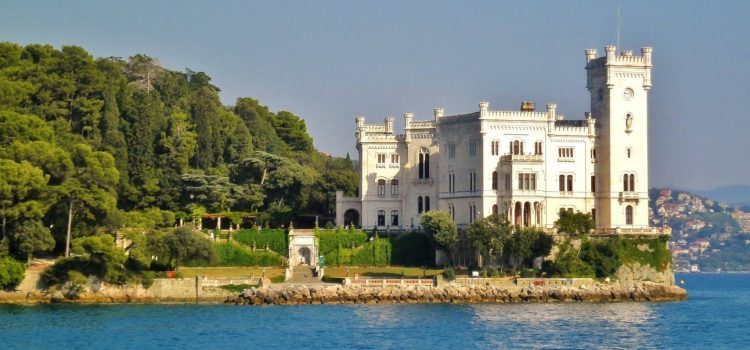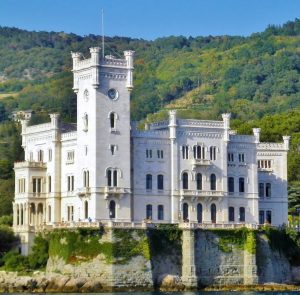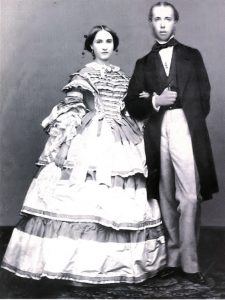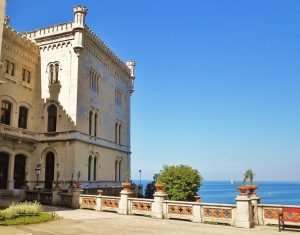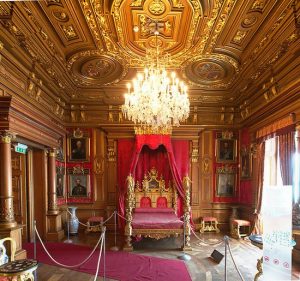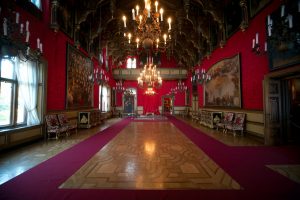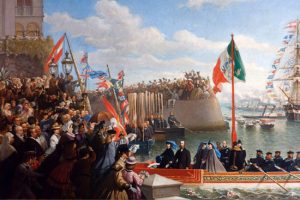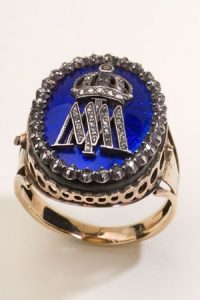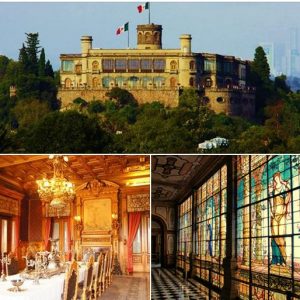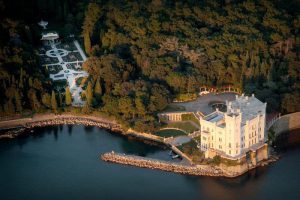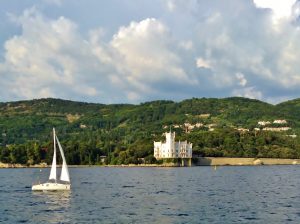The Castle stands on the Miramare promontory overlooking the sea near the bay of Grignano a few kilometers from the city. Maximilian of Habsburg-Lorraine, Archduke of Austria and Emperor of Mexico, in 1855.
It is said that Maximilian of Habsburg-Lorraine, Archduke of Austria and Emperor of Mexico, in 1855 following a storm, took refuge in the small port of Grignano and was fascinated by the promontory of Miramar, in Spanish “mirar el mar”. In memory of the castles that overlooked the coasts of the Atlantic Ocean, the Archduke was inspired by the place for the construction of the Castle as his home
of him and his wife Charlotte of Belgium and entrusted the project to the engineer Carl Junker. The works began on March 1, 1856 and ended in 1871 and the cost was around 600,000 florins. Miramare Castle was built in white Istrian stone in an eclectic style that combines neo-Gothic with medieval revival. The client and the architect were inspired by the current “romantisches Historismus”, developed in those years by Theophilus Hansen at the Arsenale of Vienna and the Pereira villa, just north of the imperial capital.
It is divided into two buildings connected to each other by a rear central body and a tower positioned in the area facing the sea. It is spread over two floors and a mezzanine and has battlements along the entire summit perimeter expressly desired by the Archduke. The castle overlooks, on one side, an open space decorated with flower beds and a fountain, while from the western wing, on the small port and finally, on the side opposite the entrance, it is surrounded by a terrace overlooking the sea.
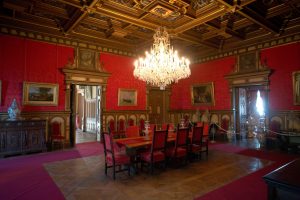 Inside, the Castle was divided into numerous rooms. The ground floor was intended for the couple’s residence, while the upper floor was for guests and representatives. Franz and Julius Hofmann carried out the interior decoration.The ground floor works ended in 1860, when Massimiliano and Carlotta moved to the Castle, after their decay from the office of governor of Lombardy-Veneto, while the representative rooms were completed around 1870. In 1930, part of the representative floor was used as the residence of Duke Amedeo d’Aosta, who lived there for about seven years and modified some rooms according to the style of the time as well as replaced Imperial-Regie insignia with Savoy crosses.
Inside, the Castle was divided into numerous rooms. The ground floor was intended for the couple’s residence, while the upper floor was for guests and representatives. Franz and Julius Hofmann carried out the interior decoration.The ground floor works ended in 1860, when Massimiliano and Carlotta moved to the Castle, after their decay from the office of governor of Lombardy-Veneto, while the representative rooms were completed around 1870. In 1930, part of the representative floor was used as the residence of Duke Amedeo d’Aosta, who lived there for about seven years and modified some rooms according to the style of the time as well as replaced Imperial-Regie insignia with Savoy crosses.The rooms of the Castle also preserve a valuable collection of oriental vases and retain all the original furnishings including ornaments, furniture and objects dating back to the mid-19th century.
The décor of the castle mostly follows the Biedermeier style but also Renaissance and Second Empire which implied a greater use of gold and the same decorations in the ceiling and floor.
Room XIX is decorated with a series of paintings by Cesare Dell’Acqua depicting the history of Miramare made with the collaboration of the historian Pietro Kandler from Trieste. On April 14, 1864, Massimiliano sailed with his wife to Mexico, aboard the Novara, the same ship that will bring his body back four years later.Before leaving I leave the testamentary dispositions in which the Castle was left to his dear Carlotta : “From what I have most dear, my Carlotta, I take leave with a heart full of gratitude. I feel the need to confess that I owe infinite happiness to her; since the smallest quarrel has never divided us, since she has always had meekness heartily for my mistakes and in all phases of our eventful life she had the truest and most faithful love that filled me with happiness ….. “No one knows better than her, what was dear to me in life and she will honor him; in particular, however, I recommend my dear Miramare and Lacroma, of which she already owns according to the deed of donation dated April 5, 1864. “
The Castillo de Chapultepec was the home of Maximilian and Charlotte in Mexico and has many architectural and natural features similar to Miramare Castle.
It is said that Carducci wanted to see the castle during one of his trips to Trieste, whence the unhappy Maximilian had left for the empire of Mexico. He entered the Archduke’s study room, built so that it resembled the cabin of the rear-flagship Novara which transported him to Mexico, he saw the portraits of Dante and Goethe at the place where Maximilian sat studying; he saw an ancient edition of Castilian romances open on the table; he saw more Latin sentences engraved in the main hall; these among others: Si fortuna iuvat caveto tolli – Si fortuna tonat caveto mergi – Saepe sub dulci melle venena latent – Non ad astra mollis and tenuis via – vivitur ingenio, caetera mortis erunt. What impression that visit made on the poet is told by the ode, which immediately afterwards he thought of, and of which he immediately wrote these first stanzas. clouds “…



